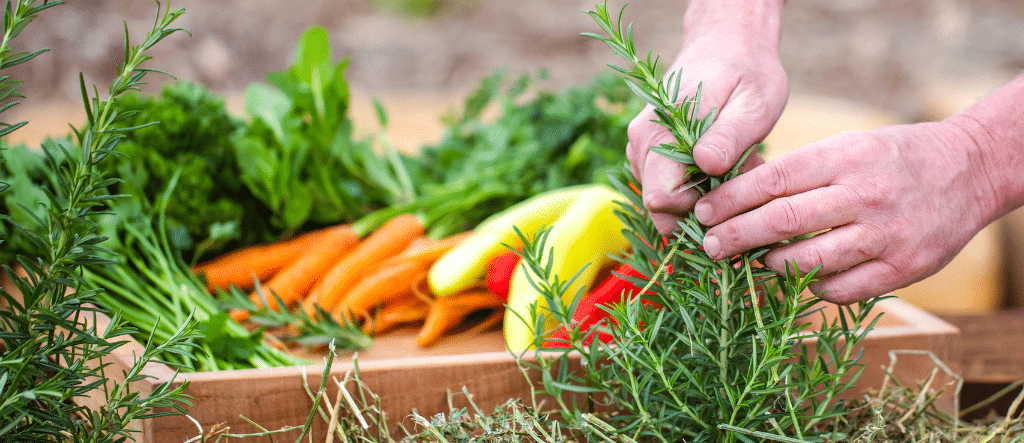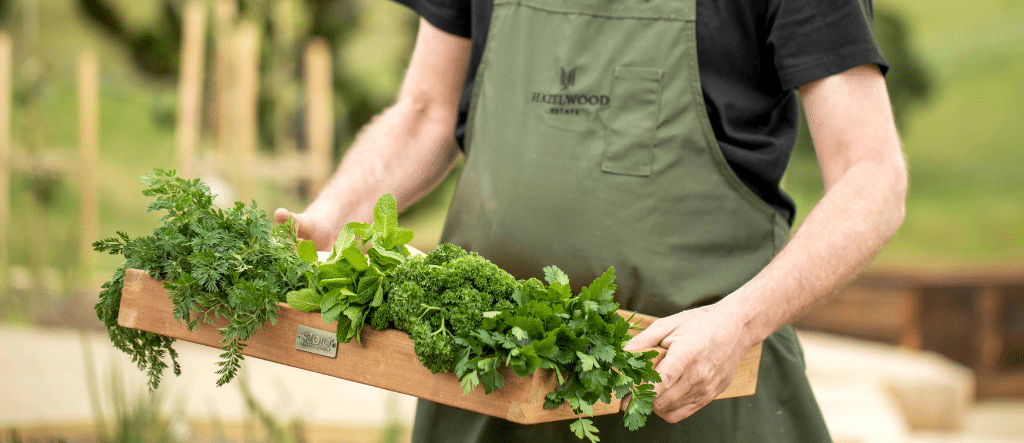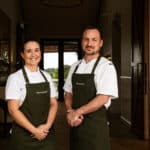From our kitchen to yours – Chef-inspired strategies to reduce food waste
You might be surprised to learn that up to 10% of global greenhouse gas emissions1, or 2,600 gigalitres of precious water is consumed producing food that is never eaten. In fact, throwing away one burger wastes the same amount of water as a 90-minute shower.2 In Australia, we waste 7.6 million tons of food each year – 70% of which is perfectly edible.3 With almost 2.5 tons of this coming from Australian homes, what can you do to cut down food waste in your home and minimise your impact on our planet?
Cameron Matthews, Beechmont Estate’s Chef in Residence has introduced a number of strategies for reducing food waste at The Paddock restaurant, many of which can be implemented at home.

Adopt a root to tip & nose to tail philosophy
Chef Matthews believes we need to reframe our idea of what waste is. “The word waste suggests it isn’t useable and that’s simply not true. Often, ingredients and off-cuts that are thrown away, could be eaten, used to add flavour to sauces and dishes, or repurposed in multiple ways”, he says. “Lettuce roots are delicious braised with chicken stock and butter, for example, while carrot tops make a great salsa verde. Never throw away fat trim either. Roast it until the fat renders off and save it to roast potatoes in, it adds so much flavour.”
Choose local, seasonal & imperfect produce
The further produce is transported, the greater the risk of spoilage. A great way to avoid waste is to buy from local farmers markets or subscribe to fresh food boxes like the Scenic Rim Farm Box that source their produce as locally as possible. This also saves some of the waste created by produce not meeting supermarket specifications. Imperfect looking fruit and vegetables taste just the same and using them can address some of the almost 25% of crop yield that is wasted based on looks and size each year.4

Repurposing ‘waste’
Bubble and squeak is a well-known way of repurposing leftovers from a roast dinner, but here are a few ideas you may not have considered:
Barista milk
Rather than throw away leftover heated milk, add some acidity in the form of lemon juice or white vinegar and you can make ricotta. Once the curd is removed, don’t dispose of the whey, instead, reduce it down to produce a syrup that can be used as a sweetener.
Juice pulp
If you love fresh juices but find yourself discarding the pulp, stop and consider what that pulp could be used for. Beetroot pulp, for example, can be used as the base ingredient for delicious beetroot burgers, while ginger pulp is a great substitute for dry ginger in cookies.
Parmesan rinds
Parmesan is wonderful source of umami, which translates from Japanese as “Essence of deliciousness”. Rinds add volumes of flavour if thrown into soups or stock pots—simply hook them out before serving. Another option is to bake the rinds and strain off the concentrated cheese oil. Even a few drops add another dimension to bone broth and the dried-out husks can be processed into parmesan powder.
Coffee grounds
As well as being food for compost, coffee grounds can be used in the kitchen too. Bury vegetables in a thick layer of coffee grounds mixed with salt and spices and they will pick up that delicious coffee flavour while roasting in the oven. It makes an amazing rub for meat too.
Stale bread
Stale sourdough can be milled or ground into flour and used to bake another loaf of bread.
Pre-plan your weekly menu
Planning your meals in advance means you only buy the fresh ingredients you actually need minimising the risk of spoil and wastage.

Grown your own
If growing your own herbs and veggies is an option, take a leaf out of Chef Matthew’s playbook and don’t plant them all at the same time or in a single spot. That way you will have a regular source of produce rather than a bumper harvest once or twice a year that you can’t consume before it spoils.
Develop a ‘to-the-gram’ portioning regime
Leftovers are one of the top five sources of household food waste, so measuring your portion sizes ensures that you eat all that you cook, and has the added bonus of discouraging overeating if you’re on a diet.
We hope these ideas inspire you to think differently about ‘waste’ and come up with creative ways to use or reuse items that might otherwise end up in the bin.
About Cameron Matthews
Beechmont Estate’s Chef in Residence and former Group Executive Chef at Spicers Retreats, Cameron Matthews is a Churchill Fellowship medal winner who has researched sustainability practises for high-end restaurants and food outlets. A copy of the report can be found here.
1 United Nations Environment Program (UNEP) (2021). Food Waste Index Report 2021.
2 https://www.awe.gov.au/environment/protection/waste/food-waste
3 https://www.fial.com.au/sharing-knowledge/food-waste
4 Horticulture Australia




